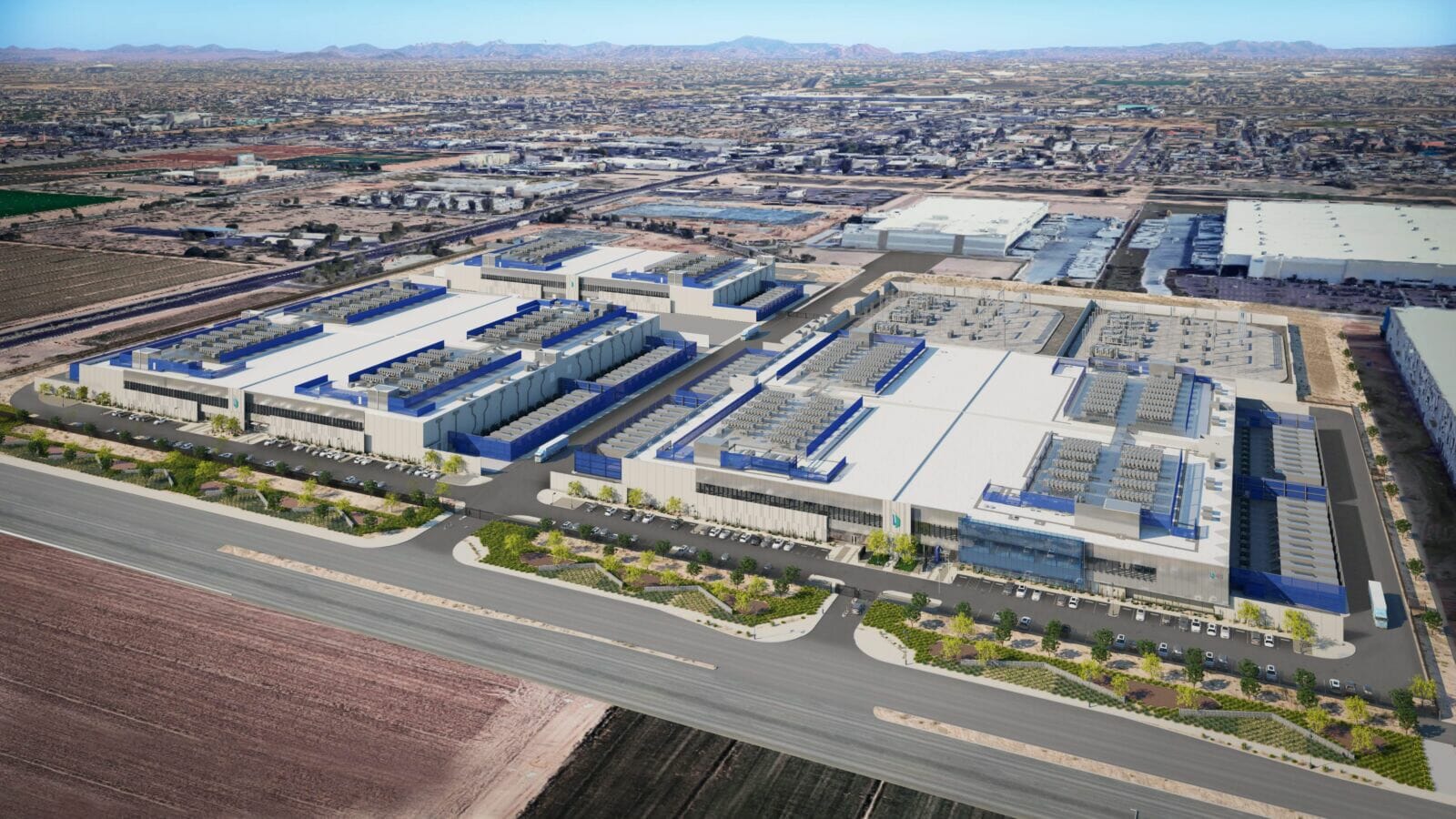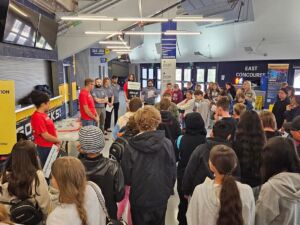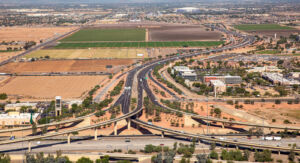From the outside, a Metro Phoenix data center looks like a large, nondescript concrete structure not that different from other industrial buildings. But inside, racks of servers hum along as they provide the infrastructural backbone for the U.S. knowledge economy — one that is increasingly reliant on technology and the near instantaneous transfer of information. Arizona has become a darling for data center developers thanks to inexpensive power, low risk of natural disaster, affordable land and available tax incentives — yet some cities are rethinking how many data centers they want in their borders.
DEEPER DIVE: Here’s a look at the future of water in Arizona
READ ALSO: Some fast facts to know about the Arizona water supply
A recent report from Cushman & Wakefield ranks Phoenix as the No. 9 data center market in the world. Data centers are marketed by their power capacity, and in 2022, Phoenix absorbed 411 megawatts (MW). The report notes that demand remains high and is only limited by the availability of additional space.
“Phoenix has a 2.4% vacancy rate, and that’s very low in the data center sector,” explains Jacob Albers, research manager at Cushman & Wakefield. “Demand is outpacing the new arrivals of supply and [Phoenix’s] absorption number is strong compared to other markets.”
With approximately 338 MW in the construction pipeline, Albers says Phoenix has a deep bench of upcoming projects that only a few other regions can contend with. Mark Krison, executive vice president at CBRE, adds that data center developments that serve hyperscalers — the industry term for major cloud providers such as Meta, Google and Microsoft — are two years presold.
“Everything coming out of the ground right now is getting rented. If you’re a hyperscaler and want 1 million square feet of space, you can’t get it right now,” he says. “There used to be standing inventory five years ago.”
Absorbtion started to accelerate as the pandemic hit in 2020, Krison notes, as a significant portion of the U.S. workforce began working at home and people were broadly spending more time online — meaning the quantity of information being transmitted ballooned.
“Hyperscalers needed to accommodate that expeditious growth [in data usage] by taking down more data center space,” Krison continues. “That all happened as [Phoenix] had an industrial crush of activity. We had this vortex of amazing industrial and data center growth going on at the same time, and so there’s a shortage of [building materials]. The delivery platform got stretched out because we couldn’t get steel or concrete, yet the demand [for data centers] continued to grow.”
Big buildings, few jobs
Over the past few years, the City of Mesa has become a destination for data centers, with hyperscalers populating the municipality’s Elliot Road Technology Corridor.
“We have anchored the Elliot Road Tech Corridor with Apple, Meta and Google [data centers],” explains Bill Jabjiniak, economic development director for Mesa. “With the amount of power available, [the tech corridor] has become a desirable location. We already had an existing 69 [kilovolt (kV)], 230 kV and 500 kV line, along with both dark and lit fiber.”
Infrastructure is crucial for data center developers, which draw significant amounts of electricity. Part of the reason for the backlog of data center projects in the Greater Phoenix market is because of supply chain issues related to power.
“The delivery of electricity is still happening — it’s scheduled, ordered and deliverable,” Krison explains. “The power is available, but the delivery times are stretched out because the substations need transformers, and those construction timelines are delayed. We used to get power delivered in six to 12 months, now it’s 12 to 24 months like everywhere else in America, so we’re just catching up to the average delivery timeframe.”
Jabjiniak notes that despite having good parcels for data centers — some of which are already in the hands of developers but have yet to begin construction — Mesa is no longer actively recruiting data centers.
“We have a well-educated workforce, which feeds nicely into data centers, but there’s not a lot of those jobs,” he says. “We’re now trying to add manufacturers, which will allow us to have good jobs not just in the tech corridor, but all of Southeast Mesa.”
Mesa also does not have a primary property tax, so the city doesn’t get major tax revenue just because a large facility is built that only needs a small staff to operate.
“We live off of sales tax revenue, so from an economic development perspective, having high quality jobs creates a whole lot of economic benefit,” Jabjiniak continues. “Instead of just chasing retail dollars, if you go after high wage jobs, that creates demand for housing, which creates demand for quality retail. The tax dollars flow from retail — but look at all the other economic benefits that have been accrued along the way.”
Phoenix data center water woes?
Beyond some cities pulling back on data center development because of the amount of land needed and low number of jobs created, water usage is another prime concern. Cushman & Wakefield’s report notes the U.S. Department of Interior’s restriction on Arizona’s Colorado River water allocation may dampen investor interest in the short-term as the market adapts.
The racks of servers inside these buildings are constantly running and generate enormous amounts of heat. Some operators use HVAC and water-cooling systems to ensure the facility is operating optimally, but that is changing.
“A lot of developers have been adapting to geographic locations that have water scarcity issues,” Albers explains. “In many Sunbelt data centers, we’ve seen increased usage of either some form of waterless cooling technology or extensive recycling of the water that they do use.”
Jabjiniak adds that he’s seen the sector push for innovations that both lowers costs and have a positive environmental impact.
“[Data centers] use a lot of electricity, there’s no way around that,” he says. “So how do they become more efficient? How do you minimize water use? But we’re not seeing many water requests today, they’re all air cooled or using some other technology. That’s what’s changing in the data center world.”
Even though there may be shifts in where these facilities are built within Greater Phoenix, Albers sees momentum in the construction pipeline and strong competition for available land sites that can support a data center. “I don’t think [data center development] is slowing down anytime soon. Phoenix is one of the strongest markets in terms of megawatts coming online, and the absorption has been incredible. A lot of new product is pre-leased before a shovel hits the ground, so that demand is indicative of a really robust market going forward,” he concludes. “Investors will consider [water scarcity], but the positives in the market outweigh that warning sign.”




